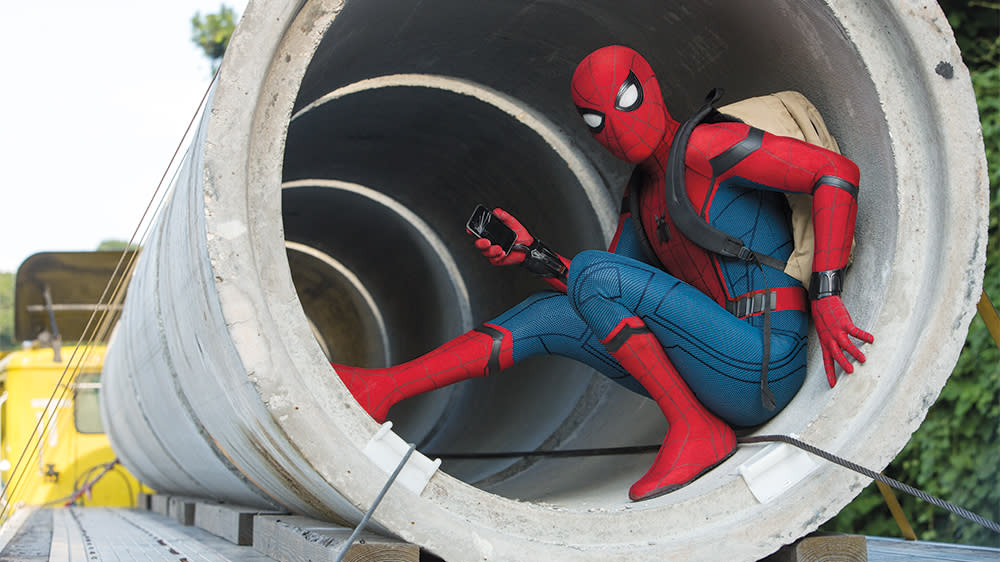Film and TV Productions Are Using Drones for Scouting Locations, Lighting and More

Since a ruling by the Federal Aviation Administration in 2014 that cleared the use of drones in film and TV production, the acquisition of footage by these unmanned flying machines has become de rigueur for aerial shooting in cases when cranes or aircraft are impractical or unsafe.
As such, drones have been greeted enthusiastically not only by DPs, who deploy them to secure those hard-to-get shots and angles, but also by location managers, who are responsible for handling filming sites, permitting fees, logistics and safety.
Related stories
Quentin Tarantino's 'Once Upon a Time in Hollywood' Enters Oscar Race Following Cannes Premiere
Cannes Film Review: 'Once Upon a Time...in Hollywood'
Mike Fantasia, a supervising location manager on a long list of high-profile films — including “Spider-Man: Homecoming” and the upcoming “Top Gun: Maverick” — has used drones for scouting and planning the details of shoots.
In fact, Fantasia, who is president of the Location Managers Guild Intl., believes in applications beyond just filming. “I can see a drone hoisting a light into the night sky, replacing a crane or manlift, or holding a silk to block or temper the light on a sunny day,” he says. The location pro adds that drones could “even deliver equipment to distant locations.”
It’s not hard to imagine a future in which drones hover anywhere on set where something needs to be held up — for example, replacing boom mics (assuming the noise of propellers can be overcome), or deploying special effects devices such as smoke machines.
A research project at ETH Zurich, the Swiss institute of technology, aims to simplify performance capture for animation. The technique demands multiple sensors shooting an actor from every possible angle. Only two camera angles are usually necessary at a given moment, with the system switching between the fixed sensors as the subject changes direction and orientation. In the ETH study, two drones follow the performer’s movements and automatically reposition themselves to maintain the necessary coverage. In addition to reducing the need to deploy sensors in all directions, the system uses machine-learning algorithms to anticipate the actor’s movements, preemptively repositioning the drones to maintain coverage.
Drones are also being used to carry another futuristic tool that’s quickly becoming important for visual effects: Lidar-capture equipment. Data collected by Lidar (a combination of the words “light” and “radar”) is obtained by sending light pulses across an area, detecting the reflected echo and using the delay to determine the distance of objects from the source. The information produces a 3D map of the area that can be imported into VFX software and altered based on the colors, shadows and behavior that a scene demands. Lidar-capture equipment isn’t much heavier than an everyday digital camera, so it’s well suited for drone flight.
But drones are not taking to the skies as much as some would like. One limiting factor, says Fantasia, is the ongoing discussion around public safety, which may preclude their use in many areas. Despite the FAA ruling, Fantasia explains, drone users face a lot of red tape and must coordinate with additional government agencies to secure permits. And when it comes to the fast-paced needs of TV production, one location manager says, waiting for drone approvals just isn’t feasible.
At issue most often is a rule that requires special permits for shoots that fly drones over individuals who aren’t part of the production, resulting in the time-consuming process of contacting anyone who’s affected.
An Atlanta shoot of “Spider-Man: Homecoming” covered about three city blocks, Fantasia says. “We had to contact every property owner to ensure that they were either inside or away from their house, and had to work with people to move a backyard birthday party.”
Philip Sokoloski, a spokesman for Los Angeles permitting agency FilmLA, notes that while there’s extra paperwork involved for productions that use drones, it generally takes no more time to secure a permit — about three days.
Regulations also vary among nations. Location manager Lori Balton, whose credits include the upcoming “Once Upon a Time in Hollywood” and Disney’s remake of “The Lion King,” was stymied on the latter production by rules prohibiting drones at national and state parks in the U.S. But most countries have no such laws, and drones were “invaluable,” Balton says, when she scouted locations in Central and South America for upcoming Disney film “Jungle Cruise.”
Filmmakers who use drones hope that eventually, as they become more prevalent and prove their safety, they will dispel many of the doubts that are hindering their widespread adoption.
Sign up for Variety’s Newsletter. For the latest news, follow us on Facebook, Twitter, and Instagram.

